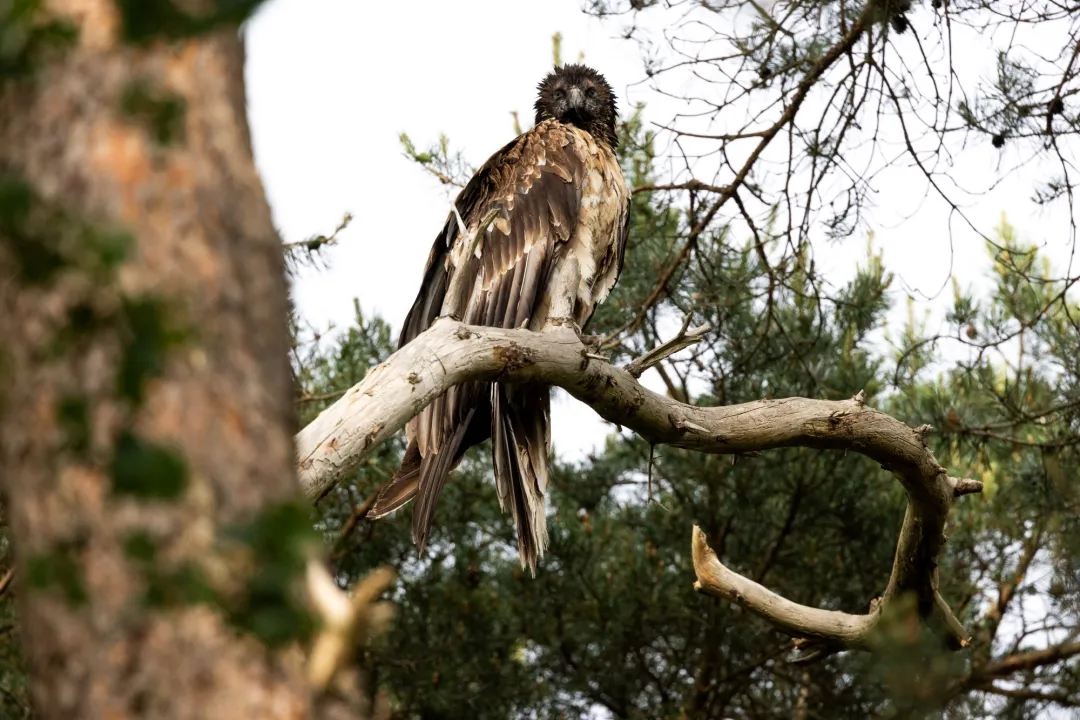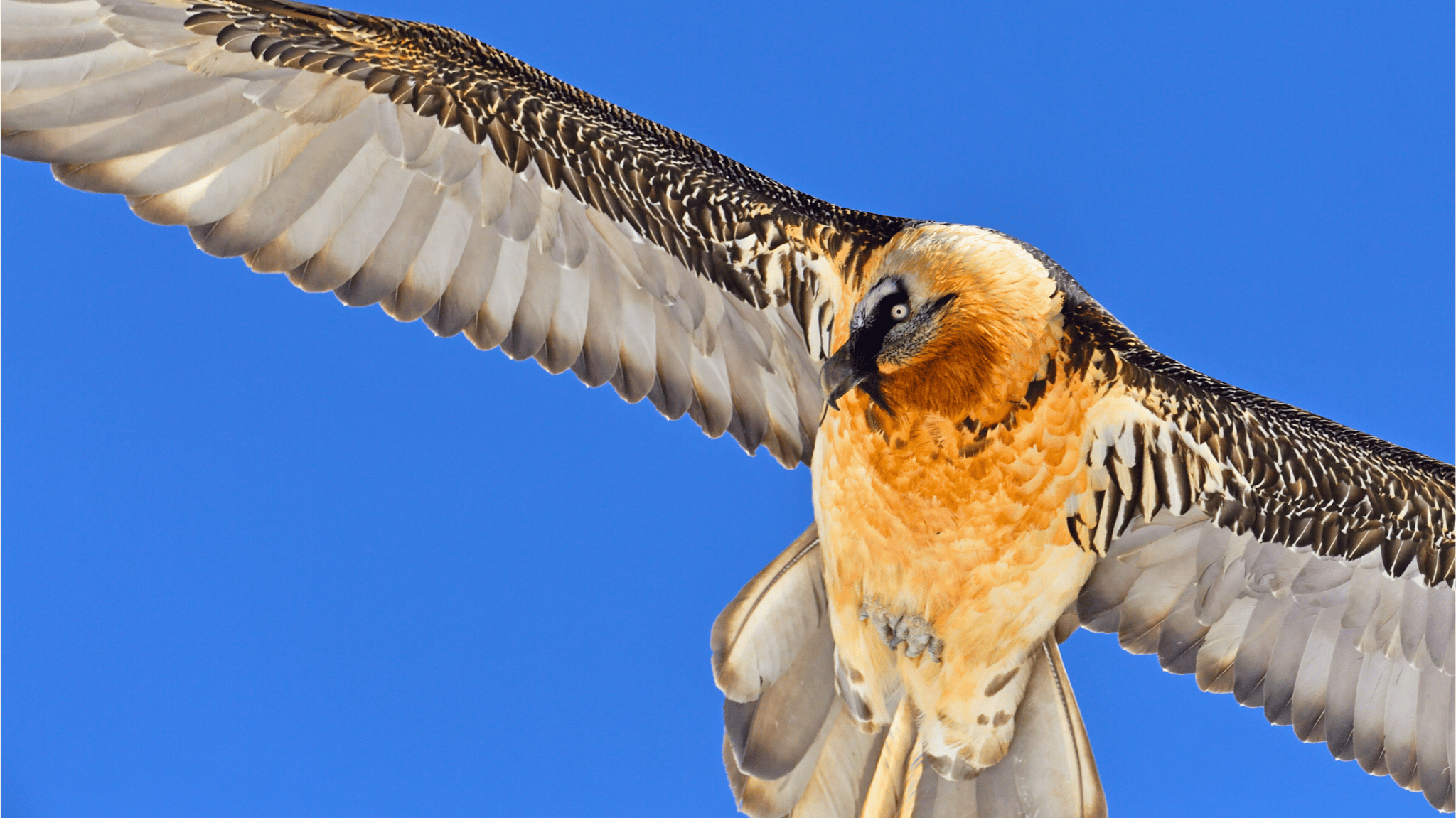How is the Bearded Vulture (Gypaetus barbatus) reintroduction project in Andalusia going on? How many wild hatchlings have fledged this year? Today we share the latest updates on the Andalusian Bearded Vulture population, including the wild hatchlings produced this year and the released captive-bred juveniles.
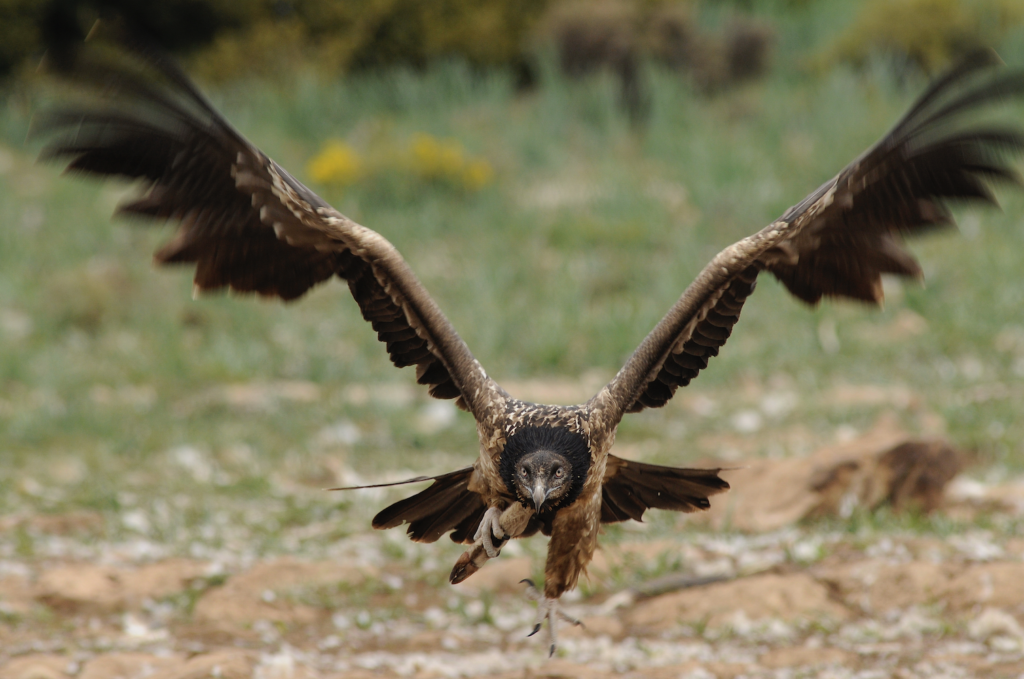
Fresh news from the Andalusian Bearded Vulture population
According to Junta de Andalusia, twelve Bearded Vulture pairs attempted to breed this season. Younger pairs tend to have more breeding failures on their first attempts, as they need more experience in incubating and rearing their hatchlings. Only ten pairs laid clutches, with eight being laid this season. Five chicks hatched, but only two survived. The hatchlings, Serrana and Amaya, have both fledged in the Sierra de Cazorla y Las Villas Nature Park, which is, so far, the only area in Andalusia where chicks fledged. Unfortunately, in 2022, a hatchling died of natural causes before fledging in Castril Nature Park.
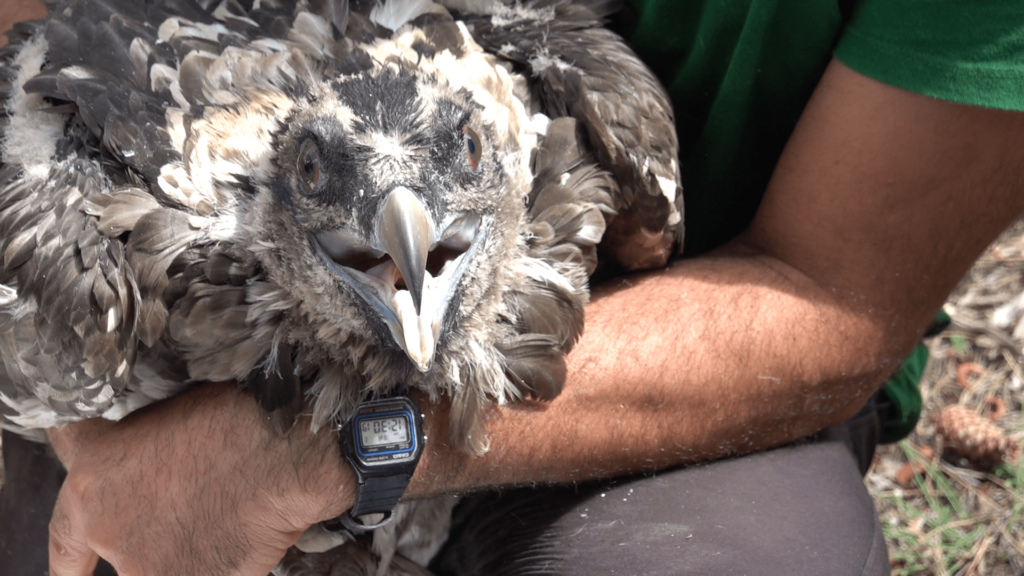
Bringing the Bearded Vulture back to Andalusia
Over the last century, multiple threats, including direct persecution, illegal wildlife poisoning and the lack of suitable habitat or food availability, plummeted the number of vulture species in Europe. In many regions, the Bearded Vulture disappeared as a breeding species, as happened in Andalusia in 1986.
Committed to bringing the species back to Andalusian skies, Junta de Andalucia started a reintroduction project in 1996. For that, indiviuals hatched and reared in captivity are released in a suitable nesting site for Bearded Vultures as they age three months old, still too young to fly. The hacking mimics their natural way of fledging, as they need to spend some weeks practising their flying skills before taking their first flight. Bearded Vultures are philopatric, meaning they tend to return to the region where they fledged once they reach sexual maturity.
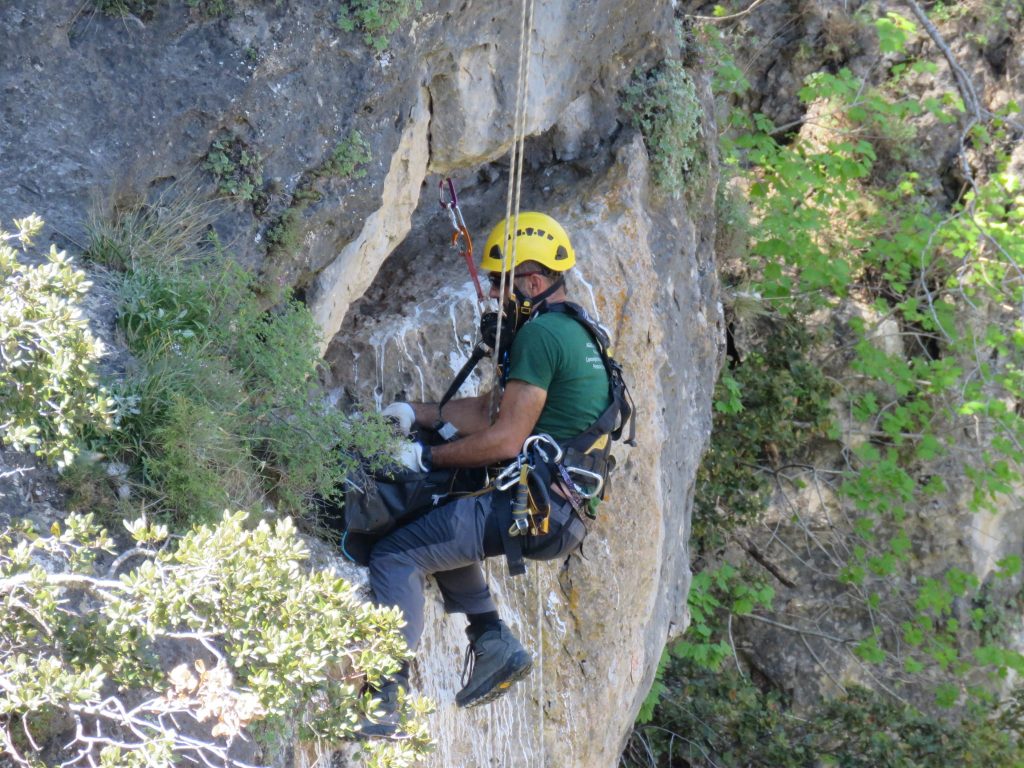

Tagging chicks in the wild
Each captive-bred chick is ringed and gets some primary feathers bleached following a unique pattern before being released in the wild. Bleaching feathers is a non-invasive method that allows the bird’s identification from far during its first three years of life until new feathers replace the bleached ones. Chicks are also fitted with a GPS transmitter, enabling the team to track their movements.
Tagging chicks in the wild follows the same process and technics but is much more complex than birds reared in captivity. It requires intensive fieldwork, with several hours looking for nests and regularly visiting all breeding pairs identified. The monitoring team needs to estimate the hatchlings’ age, to define the right moment for tagging the hatchling: when its body is grown enough to carry the transmitter, but the chick can still not fly away or jump off the nest if scared. Experienced climbers have the difficult task of reaching the nest and taking all the necessary equipment to handle the bird, ring and attach the transmitter. Also, a health check is performed in situ, and biological samples are collected for genetic analyses, which enables to detect the hatchlings’ sex and descendency.
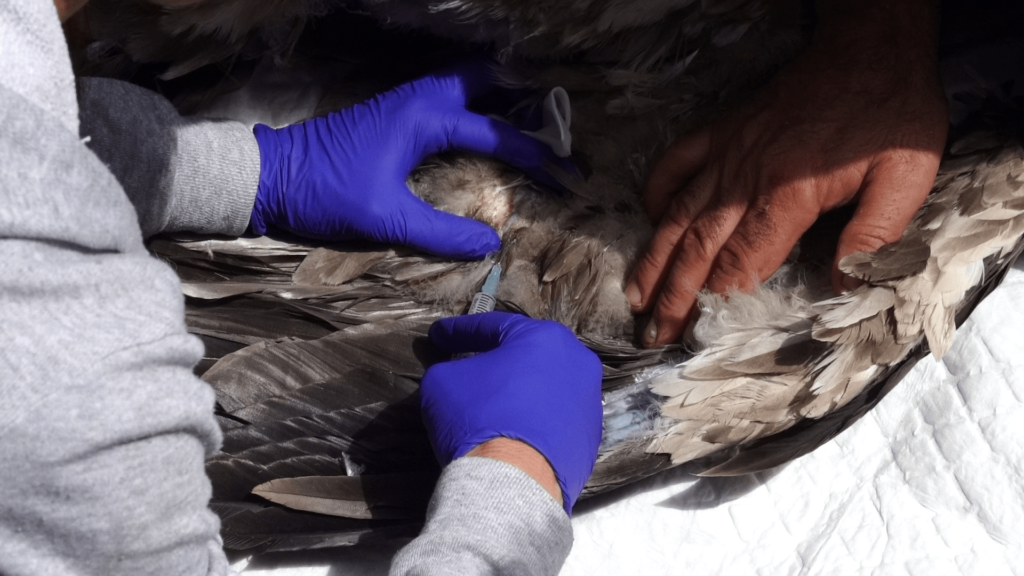




Collecting biological samples, ringing, installing a GPS transmitter and bleaching feathers of wild-hatched Bearded Vulture juveniles in Andalusia © Junta de Andalucia
The animals are marked at around 90 days of age (the first flights are made at about 120 days). As the Bearded Vulture is such a large-bodied bird of prey, it also has a very prolonged development over a long period.
Borja Nebot Sanz, Junta de Andalucía
How many Bearded Vultures have hatched in the wild?
The first Bearded Vultures were released in 2006, but reintroduction projects take several years to bear fruits. It was only in 2015 the first pair (Blimunda and Toño) successfully bred in the wild. Esperanza became the first wild-born fledgling, 32 years since the species was driven to extinction in the region. Since Esperanza fledged in 2015, eleven Bearded Vultures were born in the wild and successfully gained their freedom. Five have unfortunately died, and two of the seven remaining have lost their GSP transmitters, leaving the local team clueless about their health condition or location.
Releasing Bearded Vultures to restore the Andalusian Bearded Vulture population
Until today, 75 captive-bred Bearded Vultures have been released in Andalusia across various territories, encompassing Sierras de Cazorla, Segura, Castril, and Las Villas. This breeding season, two juveniles were released in Castril Nature Park, on 23 May, named “Empanadas” (BG 1166) hatched in Torreferrusa Wildlife Centre in Catalonia, and “Tornajo” hatched and reared in Guadalentín Specialised Breeding Centre in Andalusia. Another two juveniles, “Serafín” (BG 1188) hatched at the Chomutov Zoo in the Czech Republic and “Ángeles” (BG 1182) hatched at the Korkeasaari Zoo in Helsinki, were released in June in Sierras de Cazorla, Segura e Villas Nature Park.
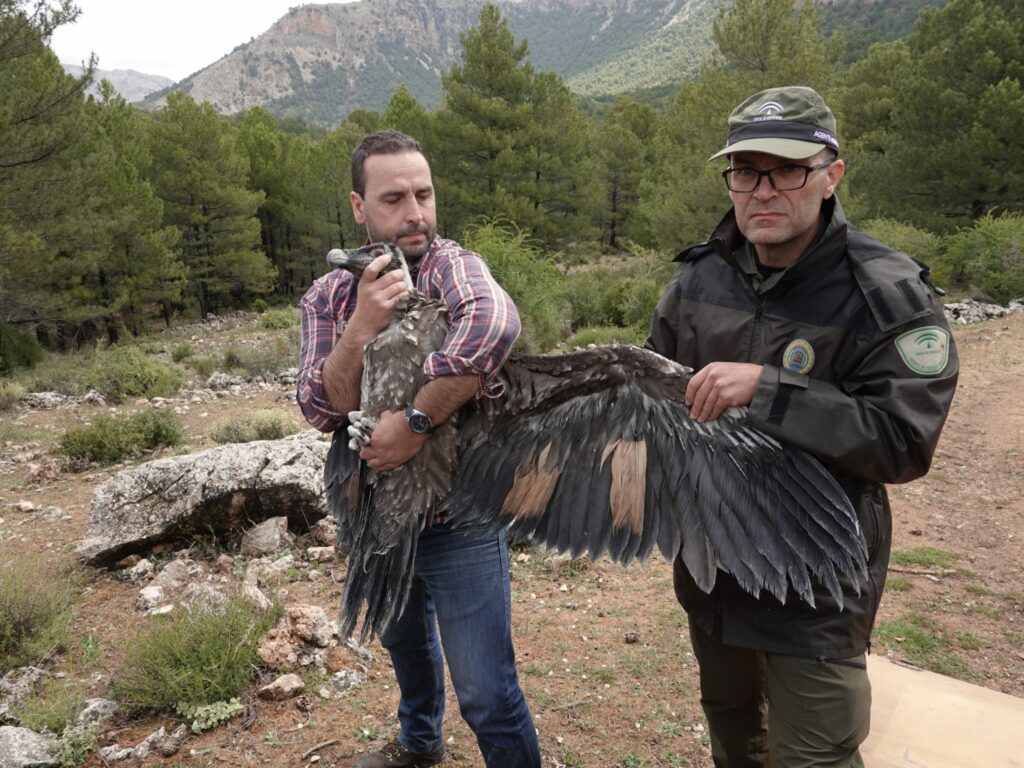

Bearded Vulture reintroduction project in Andalusia
The Vulture Conservation Foundation (VCF) has been involved in the Andalusia reintroduction project, using our long experience breeding Bearded Vultures in captivity. In addition, under an agreement with Junta de Andalucia, we are coordinating the Specialised Breeding Centre of Guadalentín, where most chicks hatched have been helping to restock wild populations across Europe.
After the successful reintroduction project that restored the species in the Alps, Bearded Vulture conservation has produced outstanding results in other areas in Spain (Maestrazgo) and France (Massif Central and Corsica). Bearded Vulture conservation efforts will soon be expanded to the Balkans! Thanks to the new “Life for the Bearded Vulture” project, Bulgaria is getting ready to welcome the first reintroduced juveniles, since the species became extinct in 1980s.
Source: Junta de Andalucia


